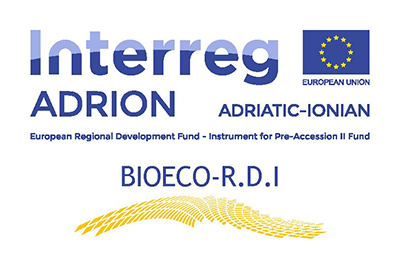
Republic of Albania
Location: Southeastern Europe, bordering the Adriatic Sea and Ionian Sea, between Greece to the south and Montenegro and Kosovo to the north
Total: 28,748 sq km
Land: 27,398 sq km
Water: 1,350 sq km
Natural resources: petroleum, natural gas, coal, bauxite, chromite, copper, iron ore, nickel, salt, timber, hydropower, arable land
Land use:
agricultural land: 43.1%
arable land: 22.6%
forest: 28.12%
other: 28.75%
ECONOMIC ENVIRONMENT
Economic growth is expected to remain above the 4% level in 2019-2021, and will therefore continue to improve. In particular, economic growth should be 4.3% in 2019 by 4.4% in 2020 and 4.5% in 2021. Positive rates will be mainly supported by domestic demand, both in terms of private consumption and of investments, although net foreign demand should have a positive but marginal effect. The medium-term final consumption (2019-2021) is expected to increase in real terms by around 3.1% per year, contributing on average to 2.8 percentage points per year to the increase in GDP. While the total investment in the economy will grow in real terms on average by 5.6% per year, with a slight acceleration in 2021, where the average contribution will be around 1.5 percentage points per year. The forecasts of the World Bank (WB) and the International Monetary Fund (IMF) are more moderate but still positive. Both have revised their forecasts downwards for 2019 (3.6% and 3.7% respectively) and in 2020 (3.5% and 3.9% respectively), with the conclusion of the TAP and construction works Devolli hydroelectric plant. In the III-T of 2018, the flow of FDI amounted to USD 234,154 million. This is mainly attributable to the electricity and gas sectors, which benefited from the construction of an important hydroelectric power station in the south-east of the country and above all from work on the TAP gas pipeline. In this regard, the IMF and the World Bank have called for diversification of investments into other sectors, such as services. Public debt remains at alarming levels (the latest estimates make it stand at 63.5% of GDP at the end of 2018), despite the fact that the long-term program drawn up by the Ministry of Finance establishes that by 2020 it must go down to below the 60% share of GDP. To achieve this goal, the Authorities agreed with the IMF to reach a primary balance of 0.7% of GDP in 2017. The level of unemployment also remains high (12.2%), although with a declining trend. On the other hand, the average inflation rate remained at decidedly contained levels in 2018 (+ 1.8%), while the depreciation of the Euro is worried, having reached the all-time low of the decade in December 2018, reaching 122 Lek. On the foreign trade front, according to INSTAT data for the whole of 2018, Italy is by far the main partner of Albania with a 34% share. In terms of global trade balance, also in 2018 the EIU data foreshadow a heavy negative balance (-2.67 billion dollars), a deficit that is increasingly becoming of a structural nature. In overall, the country enjoys a stable macroeconomic situation, supported by a banking and financial market that has shown solidity and the ability to withstand the international crisis.
SOURCES:
https://www.cia.gov/library/publications/resources/the-world-factbook/
http://www.infomercatiesteri.it/index.php
https://www.istat.it/it/archivio/230644
https://www.focus-economics.com/countries/slovenia
Total: 28,748 sq km
Land: 27,398 sq km
Water: 1,350 sq km
Natural resources: petroleum, natural gas, coal, bauxite, chromite, copper, iron ore, nickel, salt, timber, hydropower, arable land
Land use:
agricultural land: 43.1%
arable land: 22.6%
forest: 28.12%
other: 28.75%
ECONOMIC ENVIRONMENT
Economic growth is expected to remain above the 4% level in 2019-2021, and will therefore continue to improve. In particular, economic growth should be 4.3% in 2019 by 4.4% in 2020 and 4.5% in 2021. Positive rates will be mainly supported by domestic demand, both in terms of private consumption and of investments, although net foreign demand should have a positive but marginal effect. The medium-term final consumption (2019-2021) is expected to increase in real terms by around 3.1% per year, contributing on average to 2.8 percentage points per year to the increase in GDP. While the total investment in the economy will grow in real terms on average by 5.6% per year, with a slight acceleration in 2021, where the average contribution will be around 1.5 percentage points per year. The forecasts of the World Bank (WB) and the International Monetary Fund (IMF) are more moderate but still positive. Both have revised their forecasts downwards for 2019 (3.6% and 3.7% respectively) and in 2020 (3.5% and 3.9% respectively), with the conclusion of the TAP and construction works Devolli hydroelectric plant. In the III-T of 2018, the flow of FDI amounted to USD 234,154 million. This is mainly attributable to the electricity and gas sectors, which benefited from the construction of an important hydroelectric power station in the south-east of the country and above all from work on the TAP gas pipeline. In this regard, the IMF and the World Bank have called for diversification of investments into other sectors, such as services. Public debt remains at alarming levels (the latest estimates make it stand at 63.5% of GDP at the end of 2018), despite the fact that the long-term program drawn up by the Ministry of Finance establishes that by 2020 it must go down to below the 60% share of GDP. To achieve this goal, the Authorities agreed with the IMF to reach a primary balance of 0.7% of GDP in 2017. The level of unemployment also remains high (12.2%), although with a declining trend. On the other hand, the average inflation rate remained at decidedly contained levels in 2018 (+ 1.8%), while the depreciation of the Euro is worried, having reached the all-time low of the decade in December 2018, reaching 122 Lek. On the foreign trade front, according to INSTAT data for the whole of 2018, Italy is by far the main partner of Albania with a 34% share. In terms of global trade balance, also in 2018 the EIU data foreshadow a heavy negative balance (-2.67 billion dollars), a deficit that is increasingly becoming of a structural nature. In overall, the country enjoys a stable macroeconomic situation, supported by a banking and financial market that has shown solidity and the ability to withstand the international crisis.
SOURCES:
https://www.cia.gov/library/publications/resources/the-world-factbook/
http://www.infomercatiesteri.it/index.php
https://www.istat.it/it/archivio/230644
https://www.focus-economics.com/countries/slovenia
Companies
Republic of Albania
 Go to the Bioeco R.D.I. website
Go to the Bioeco R.D.I. website



